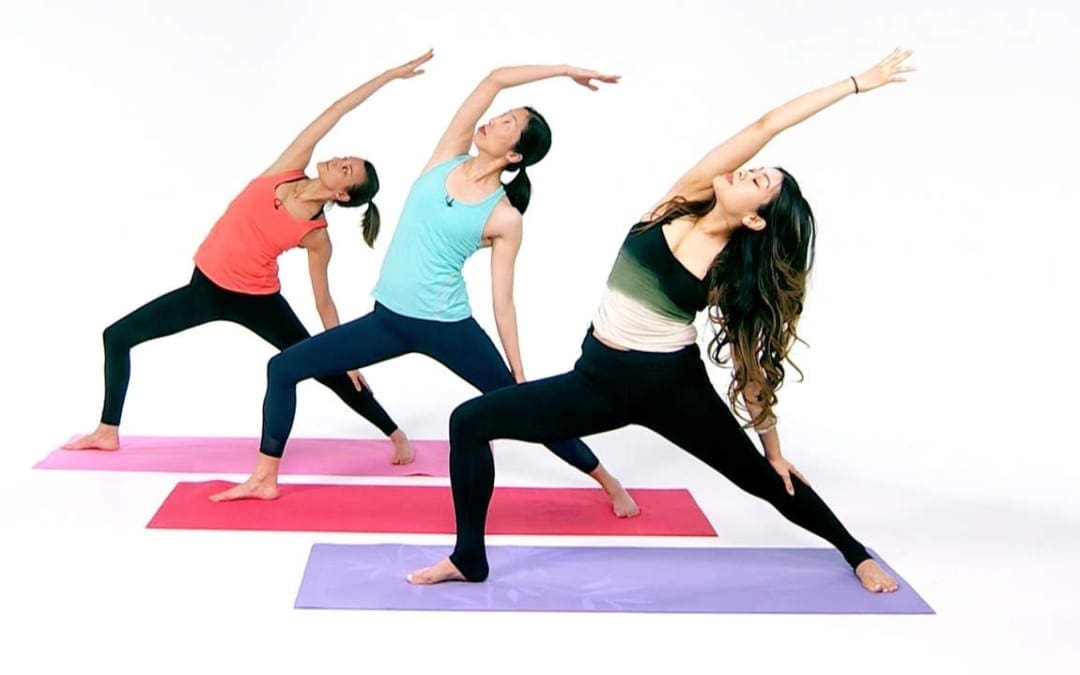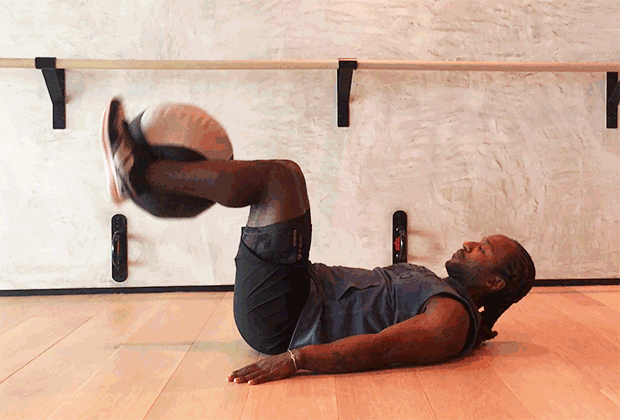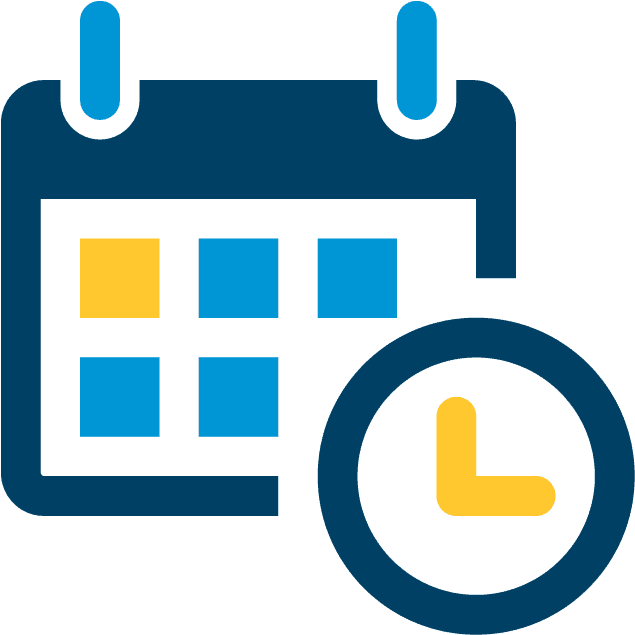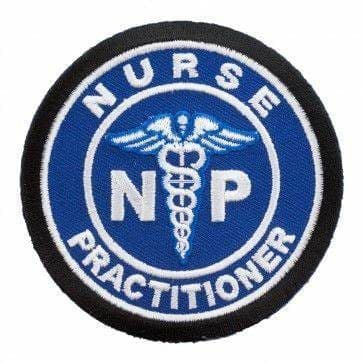
by Dr Alex Jimenez DC, APRN, FNP-BC, CFMP, IFMCP | Fitness, Health, Wellness
It’s no secret that sitting at a desk all day isn’t good for you. A sedentary lifestyle can lead to weight gain, which may then lead to a host of other issues. Research has shown that sitting too much throughout the day can lead to a number of different health problems, including obesity, heart problems, and diabetes.
However, there are things you can do to offset the health risks of sitting at your desk, such as getting up to take frequent walks. But even if you can’t leave your chair, there are even plenty of movement exercises you can do right from your desk, such as chair yoga. You could also take advantage of the time to work on some mobility training—a form of exercise that focuses on improving your stability, range of motion, and loosening your muscles so you can perform better during any workout.
Frank Baptise, founder of Frankly Fitness, is a big fan of mobility training as an effective way to help promote healthy joints, balance, and flexibility in your body. Here, he demonstrates six simple yet effective moves to try at your desk. All you need is a stress ball and a desk chair!
Don’t have time to watch? Here’s a quick rundown of Baptiste’s go-to mobility moves:
Glute and piriformis: self-myofascial release
Roll and apply pressure. Hold for 5-10 deep breaths.
Peck roll
Roll and apply pressure. Hold 5-10 deep breaths.
Plantar fascia roll
Roll and apply pressure. Hold for 5-10 deep breaths.
Modified chair downdog
Hold for 3 breaths. 3-5 reps.
Modified lunge with rotation
Hold for 3 breaths. 3-5 reps each side.
Figure four squat
Hold for 3 breaths. 3-5 reps each side

by Dr Alex Jimenez DC, APRN, FNP-BC, CFMP, IFMCP | Fitness, Health, Wellness
Feeling stressed? On any given day, you’re likely bombarded with many different stress-inducing situations. Perhaps it’s a challenging project at work, a fight with your partner, or just someone who unapologetically bumped into you on the street.
Life is filled with challenges and frustrations like these. But the good news is there are plenty of smart strategies that can help you refocus your energy so you feel calm and peaceful instead of frazzled. Take meditation and mindfulness, for example—both practices are all about checking in with yourself and filtering stress out of the mind. And if meditation isn’t your thing, exercise is also a great way to help release your daily frustrations and send a healthy dose of feel-good endorphins to your brain.
WATCH THE VIDEO: A 5-Minute Meditation to Help You Find Your Calm Now
Better yet, combine two of these mindful practices: meditation and exercise. Yoga is perfect for this, especially if it’s a calming flow that can quiet your mind while simultaneously strengthening your muscles. By forcing you to pay close attention to your breath, yoga helps stop your racing thoughts.
Watch this video for a calming 10-minute yoga flow from Kirby Koo of Yoga With Kirby. It focuses on the importance of your breath, so you can calm your mind and banish stress.

by Dr Alex Jimenez DC, APRN, FNP-BC, CFMP, IFMCP | Fitness, Health, Wellness
Anyone who struggles with back pain knows how distressing it can be. Whether it�s soreness that impedes your sleep or aches that hurt your productivity while you sit at your desk at work, back pain is hard to ignore no matter what position you�re in.
The good news? Yoga can be a surprisingly helpful remedy. In this video, yoga expert and Retox author Lauren Imparato takes you through a 20-minute yoga flow designed to soothe and prevent back pain. Yes, please!
�How you sit, how you sleep, something you ate, how you moved,� can all contribute to upper or lower back issues, Imparato explains. And while treatment options do exist�such as massage and acupuncture�studies have shown that yoga may actually be more effective than these and other alternatives. Research from the Annals of Internal Medicine found that people with chronic lower back pain saw more improvement of their symptoms after a 12-week yoga class compared to those who only received medicine or physical therapy to treat their pain.
RELATED: 4 Surprising Cures for Back Pain
Want to experience the same relief? In this video, Imparato will first help you release tightness and tension in your back by guiding you through classic stretches like cat and cow. Next, she�ll show you how to do a quick, equipment-free flow that works to stabilize the spine and strengthen the muscles in your core that support it. (Hi, toned abs!) Watch the clip above for a yoga routine that not only reduces back pain but crafts long, lean muscle at the same time.
Also check out our sister company: Best Yoga Routines for Sleep. �This is a great article that helps you doze off…. WAY Better…

by Dr Alex Jimenez DC, APRN, FNP-BC, CFMP, IFMCP | Fitness, Health, Wellness
Photo: Twenty20
This is a partial workout. You can find the rest of the moves at Life by Daily Burn.
When you look at a slam ball, leg and glute exercises may not be the first thing that comes to mind. But incorporating this soft weighted ball into your booty routine will work your lower half hard. Weak hamstrings, glutes and hips can lead to knee and back pain. So if you’re looking for a way to strengthen these muscles, while building power, the slam ball can kill two birds with one big, squishy ball.
Gerren Liles, PROJECT by Equinox master trainer and Reebok ONE Elite ambassador likes to use it for a quick leg workout. “The slam ball is a simple tool that allows you to move in multiple dimensions and directions, and can serve as a load to develop strength and power,” Liles says.
In addition to tightening and toning, the slam ball creates an unstable environment that forces your body to work harder to balance weight. (Stability challenge, anyone?) And because you’ll move in different planes of motion, you’ll work your core, legs and arms, too.
“The ball can be used as a prop to challenge your stability, as you’ll see in the Bulgarian squat and soccer tap drill. It can also be used as a form of resistance in the squat with front push and hamstring curls,” Liles explains. Check out just how versatile this space-efficient piece of equipment can be in the six exercises below.
RELATED: The 30-Minute Slam Ball Workout
6 Slam Ball Exercises That Build Lower-Body Strength
These moves will not only blast your lower half, they’ll help improve your ankle mobility, agility and reflexes. Add some intensity, and they’ll get your heart rate up, too, Liles says. Do 8 to 10 reps of each exercise for two sets.
GIFs: Tiffany Ayuda / Life by Daily Burn
1. Bulgarian Squat
This variation of the squat challenges your balance. To keep your foot from rolling off the ball, engage your core so you can move with more control, Liles says.
How to: Stand with your feet together in front of a slam ball. Step your right foot back and place your toes on top of the ball (a). Keeping your weight in your left heel, slowly lower your body into a lunge, bending your right knee towards the floor. Your left knee should form a 90-degree angle to the floor. Be sure your left knee is stacked above your ankle (b). Straighten both legs and return to standing (c).
RELATED: 6 Squat Variations for Total-Body Strength

2. Lying Hip Bridge With Hamstring Curl
Take your glute bridges to the next level with this variation that also strengthens your hamstrings. The lack of surface area on the ball is an added challenge to making the movement slower.
RELATED: 5 Exercise Machines That Aren’t Worth Your Time
How to: Lay on your back with your hips lifted off the floor and your calves and heels on top of the ball. Plant your hands on the floor at your sides (a). Draw your heels in toward your butt with control, bending your legs. Your hips should elevate even higher as you squeeze your glutes to bring your heels in (b). Slowly extend your legs back out to the starting position (c).

3. Lying Quad Extension
Your quads, hamstrings and glutes are some of the biggest muscles groups in your body. This simple move fires up all three, helping you torch more calories per workout.
How to: Lie flat on your back and place the ball between your calves with your knees bent. For an added core challenge, you can lift your head off the floor and bring your chin towards your chest (a). Without moving your hips, bring your legs straight up towards the ceiling (b). Then, bend your knees until the ball touches the back of your legs. Remember to press your low-back into the floor throughout the entire movement (c).

by Dr Alex Jimenez DC, APRN, FNP-BC, CFMP, IFMCP | Fitness, Health, Wellness
When your metabolism is running like a well-oiled machine, your body is working for you. Not only can it make maintaining (or losing) weight a little easier, but maximizing your system’s calorie-burning engine will also help you feel more energetic, active, and alive. To figure out how to get it to that happy place, incorporate these everyday eating and exercise habits into your regular routine.
Do more heavy lifting
It’s so easy to glance at the “calories burned” figure on the cardio machine and then add more time to your workout to make the number higher. But if you want your metabolic furnace to burn hotter during the day, you’re going to need to add muscle. “Muscle burns more calories than fat,” says Alissa Rumsey, RD, CSCS, author of Three Steps to a Healthier You. She advises fitting in a total-body strength workout two to three times per week, using a weight that’s heavy enough to make the 10th rep very difficult.
RELATED: 23 Snacks That Burn Fat
Eat protein in the morning and afternoon
You already know that cranking your metabolism means filling your dinner plate with quality protein (in the form of lean meats, eggs, fish, legumes, and yogurt). Thing is, it’s easy to get that chicken breast or piece of salmon in at dinner. What’s harder is remembering to eat a high-protein meal at breakfast and lunch, says Rumsey, when you’re typically on the go and too rushed to do much more than grab a piece of fruit or carb-heavy sandwich.
Getting good protein in the a.m. and p.m. “will also help you maintain and build muscle as long as you consume it before and after regular weight training workouts,” she says. Plus, research suggests that your body works harder to break down and process calories from protein than from fat or carbs, resulting in a slight bump in metabolism. And don’t forget, protein promotes satiety. You’ll feel fuller and burn more calories breaking it down. Double win.
Dial back your work stress
No one has to tell you that chronic stress is unhealthy. But stress at work is especially detrimental. One study of women with a history of mood disorders in the journal Biological Psychiatry found that those who experienced extra stress during the workday burned 104 fewer calories in response to a higher-fat meal compared to women who were not stressed. As the researchers discovered in a later study, stress can change the way your body metabolizes fats, even reducing the benefits of eating a healthy meal.
Snack before bedtime
You heard that right—it’s time to consider disregarding all those warnings about not eating after 8 p.m. “Conventional wisdom says that food you eat right before bed will sit in your stomach all night long, which will result in packing on the pounds,” says Cassie Bjork, RD, author of Why Am I Still Fat?. Instead, the right bedtime snack “will actually boost your metabolism by keeping your blood-sugar levels stable, which allows your pancreas to secrete the fat-burning hormone glucagon,” she says.
RELATED: Ultimate Metabolism-Boosting Workout
Hit the sheets early
Sleep may be the last thing on your to-do list, yet it deserves priority status, and here’s one out of a million reasons why. Not getting enough rest has a disastrous effect on your metabolism, prompting you to misread your system’s hunger cues and revving your appetite. As one study suggests, this appetite boost happens when your body calls for extra calories to fuel the additional time you’re awake—and that leads you to overeat. The National Sleep Foundation recommends adults snag seven to nine hours of shuteye per night. Give it a try tonight.
To get our best wellness advice delivered to you inbox, sign up for the Healthy Living newsletter
Get up and move—right now
Maybe you put in your 45 minutes of daily heart-pumping exercise on the regular. But if you spend the rest of the day with your butt planted firmly in a chair, you’re keeping your metabolism in stall, says Rumsey. “It’s important to move as much as possible,” she says, not just because movement burns calories but because it keeps your metabolism on high.
So make an effort to get up and stand at your desk, head outside to eat lunch and then taking a stroll, or walk or down the stairs when possible. Moving more during the day, even if you’re just heading down the halls of your office or taking the long route to the parking lot where you left your car, will keep your metabolism running, she says.
Stop counting calories
“People often think that restricting calories boosts metabolism, but this does the complete opposite,” says Bjork. Here’s why: calories are the energy that fuels your body and helps your metabolism run efficiently. Take in too few, and you’ll start to feel fatigued and hangry. Ensuring that you’re filling up your plate with lean protein (like fish or meat), healthy fats (avocado, olive oil, almond butter), and lots of fruits and veggies will deliver high-quality, nutritionally dense calories to your body. That helps your metabolism run optimally, in turn burning calories rather than conserving them.

by Daniel Alvarado B.S.E.P (Exercise Physiologist) | UTEP (Local) RSS
AUSTIN, Texas – UTEP’s Tobi Amusan continued her dominance on Saturday afternoon at the Mike A. Myers Stadium for the NCAA West Region Preliminaries. The sophomore sprinted to a first-place finish in her 100m hurdle heat with a wind-aided time of 12.57 to earn an automatic bid to the NCAA Championships.
“Tobi ran exceptionally well today, executing her race at this level,” Head Coach Mika Laaksonen said. “This will be the largest team we take to the national stage and once we get there anything can happen.”
Amusan’s time was the fastest in the 48-athlete field. The Nigeria native will make her second trip to Eugene, Ore. Last year the sophomore clocked 12.79 to finish runner up to Kentucky’s Jasmine Camacho-Quinn.
Amusan ranks No. 2 in the country and will compete at the NCAA Championships June 7-10.
The men’s 4×400 relay team consisted of Asa Guevara, Michael Saruni, James Bias and Emmanuel Korir. The mile relay team placed third overall with a time of 3:03.15. Korir anchored the team running a split-time of 43.34 bringing them back from sixth-place to finish second in their heat giving them the automatic bid to the NCAA Championships.
In the men’s 1,500m run, Jonah Koech nearly missed out qualifying to the NCAA Championships. The sophomore clocked 3:49.66 to earn an eighth-place showing in his heat.
Linda Cheruiyot registered a time of 4:36.56 to finish 12th in her heat.
The women’s 4x400m relay team of Lucia Mokrasova, Florence Uwakwe, Imani Adams and Ada Benjamin. The team ran a time of 3:45.16 to finish in eight-place in their heat.
Seven individuals and one relay team advanced to Eugene, Ore., Amusan, Samantha Hall, Lilian Koech, Winny Koech, Mokrasova, Korir and Saruni. Mokrasova’s 5,671 ranks her tied for 12th in the nation in the heptathlon, the top 24 heptathlon scores automatically advance to the NCAA Championships. Korir and Saruni will compete in both the 800m and the 4x400m relay.
The Miners will compete at the NCAA Championships June 7-10 at the historic Hayward Field in Eugene, Ore.,
For live updates and breaking news follow @UTEPTrack on Twitter and uteptrack on Instagram

by Dr Alex Jimenez DC, APRN, FNP-BC, CFMP, IFMCP | Natural Health, Wellness
A new enzyme pill could be a game changer for gluten-sensitive people, according to the authors of a new study.
The enzyme breaks down gluten in the stomach and prevents most of it from reaching the small intestine. So it could allow gluten-sensitive people to eat small amounts of the protein (found in wheat and other grains) without suffering consequences such as bloating, diarrhea, and abdominal pain.
For the study, the researchers tested the effects of an enzyme called aspergillus niger-derived prolyl endoprotease (AN-PEP) in 18 patients with gluten sensitivity. Each participant ate a serving of oatmeal with two gluten-containing wheat cookies along with either a high- or low-dose of AN-PEP or a placebo pill.
Researchers then measured gluten levels in the stomach and small intestine over a three-hour period.
In both the high- and low-dose AN-PEP groups, the researchers found that AN-PEP reduced levels of gluten in the stomach by 85 percent compared to placebo.
They also found that the enzyme reduced gluten levels in the duodenum (the first part of the small intestine) by 81 percent in the high-dose group and by 87 percent in the low-dose group.
The findings were presented at Digestive Disease Week 2017, the largest international gathering of experts from the fields of gastroenterology, endoscopy, hepatology, and gastrointestinal surgery.
“This substance allows gluten-sensitive patients to feel safer, for example, when they are out with friends at a restaurant and can’t be sure whether something is 100 percent gluten-free,” says Dr. Julia König, Ph.D., the study’s lead author and post-doctoral research fellow at the School of Medical Sciences at University of Örebro, Sweden.
“Since even small amounts of gluten can affect gluten-sensitive patients, this supplement can play an important role in addressing the residual gluten that is often the cause of uncomfortable symptoms.”
Previous research has demonstrated that AN-PEP can break down gluten when it is combined with a liquid meal and administered through a feeding tube. The new study is the first to study the effects of AN-PEP tablet in combination with a normal meal.
“Studies show that even when following a gluten-free diet, unintentional gluten intake can still occur, depending on how strict a gluten-free dieter is,” says König.
“Our results suggest that this enzyme can potentially reduce the side effects that occur when gluten-sensitive individuals accidentally eat a little gluten. We are not suggesting that AN-PEP will give these individuals the ability to eat pizza or pasta, sources of large amounts of gluten, but it might make them feel better if they mistakenly ingest gluten.”
Gluten is a protein found in grains such as wheat, rye, and barley, as well as medicines, vitamins, and supplements.
In addition to gastrointestinal problems, gluten sensitivity is associated with symptoms such as fatigue, muscle cramps, and leg numbness.
Despite some similarities, gluten sensitivity is different from celiac disease, a serious, inherited auto-immune disorder caused by gluten exposure. Unlike people with celiac disease, those with gluten sensitivity do not develop gluten antibodies and their immune systems do not mistakenly attack and damage their small intestines.
According to the National Foundation for Celiac Awareness, about 18 million Americans are affected by non-celiac gluten sensitivity, also known as gluten intolerance.
Gluten sensitivity is poorly understood. Because there are no specific tests to diagnose the condition, doctors must rule out other possible causes of a patient’s symptoms such as celiac disease and wheat allergy.
To confirm gluten sensitivity, doctors usually place patients on a diet that eliminates gluten to see if their symptoms improve. This is followed by an “open challenge” (a monitored reintroduction of gluten-containing foods) to see if their symptoms worsen.
König notes that her team did not test the enzyme on celiac disease patients, because even small amounts of gluten can cause long-term harm in these individuals.
Because of that, she does not recommend celiac patients view this enzyme as a way to start eating any gluten.















